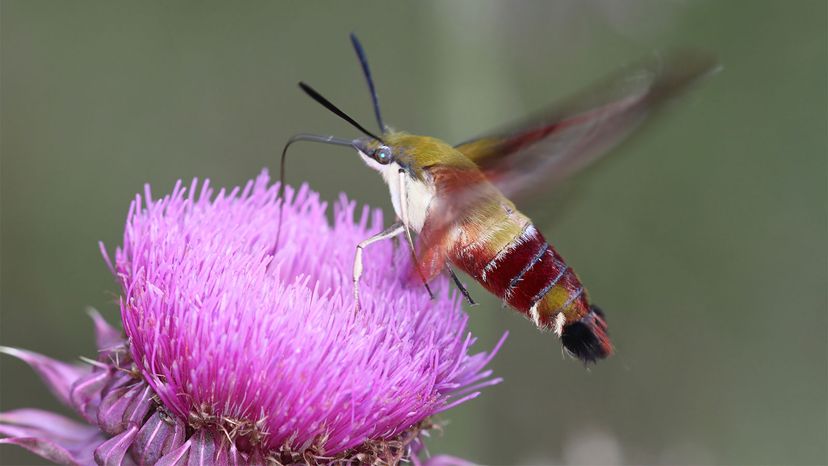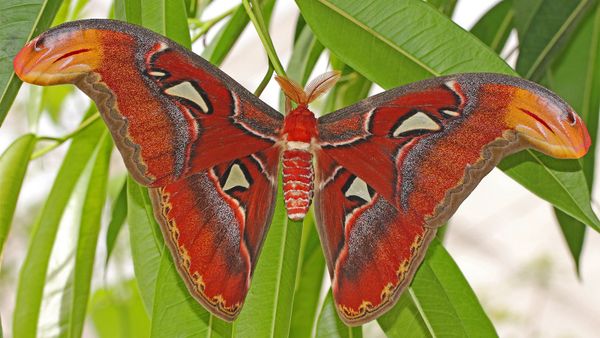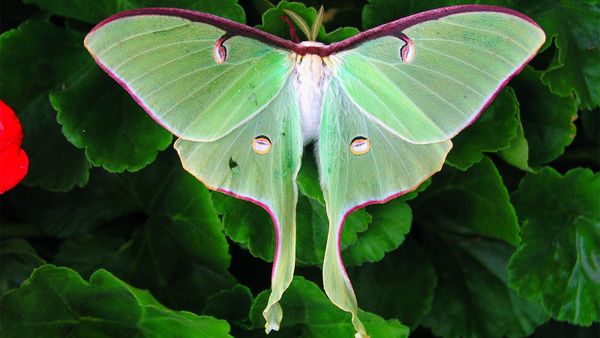
You've spotted a 2-inch (5-centimeter) creature zipping from flower to flower, its wings moving so fast they are nearly an invisible blur. A hummingbird, you declare, feeling fortunate to catch a glimpse of this beneficial pollinator, long believed to be a harbinger of spring.
As you look closer, though, something doesn't add up. Although it has the tongue-like proboscis of a hummingbird, this hovering creature is much smaller than any hummingbird you've ever seen and has antennae. Its tail is actually a bit of fluff that resembles feathers.
Advertisement
It's not a hummingbird after all. It's a hummingbird moth, a bug that looks like a bird.
There are 23 species of hummingbird moths but only five located in North America: hummingbird clearwing (Hemaris thysbe), snowberry clearwing (Hemaris diffinis), slender clearwing (Hemaris gracilis), Rocky Mountain clearwing (Hemaris thetis) and the white-lined sphinx moth (Hyles lineata).
While the territory of these five North American species of hummingbird moths ranges from Canada to Mexico, only two — the snowberry clearwing and the hummingbird clearwing — are commonly seen. Snowberry clearwings sport distinctive yellow and black body colors with a horizontal black line running down each side of its body from its eyes to its tail, while hummingbird clearwings have a distinctive reddish-brown abdomen and olive green back.
Hummingbird moths, like the hummingbirds they mimic, are adept at hovering and moving side-to-side or backward with helicopter-like precision. Although the body of a hummingbird moth takes on the cylindrical, barrel-chested proportions of a hummingbird, it is typically not as long. Hummingbird moths reach 1 to 2.5 inches (2.5 to 6 centimeters) at maturity, while hummingbirds are usually 3 to 4 inches (8 to 10 centimeters) in length. You're also likely to spot a hummingbird moth's six legs dangling as they hover, while a hummingbird will tuck its pair of slender legs into its downy belly feathers as it sups.
If you'd like to increase your odds of spotting a hummingbird moth, plant a variety of flowers. Hummingbird moths, like hummingbirds, feast on the nectar of a variety of long-necked flowers, such as trumpet creeper (Campsis radicans) or cardinal flowers (Lobelia cardinalis). Sometimes you may see a hummingbird and a hummingbird moth dining on the nectar of the same flowers; the two species often amicably share the same territory.
When it comes to leaving a legacy, however, hummingbird moths prefer specific plants like honeysuckle, dogbane and hawthorn, and trees like cherry and plum on which to lay their eggs. When the eggs hatch into larvae and transform into caterpillars, the next generation of hummingbird moths are then able to dine on their ideal plants. Although you may first see hummingbird moths in the spring, they are likely to make a reappearance in mid to late summer as their preferred flowers pump out more nectar.
Advertisement


